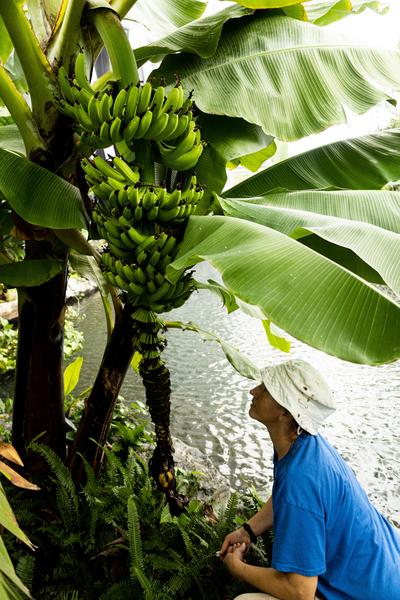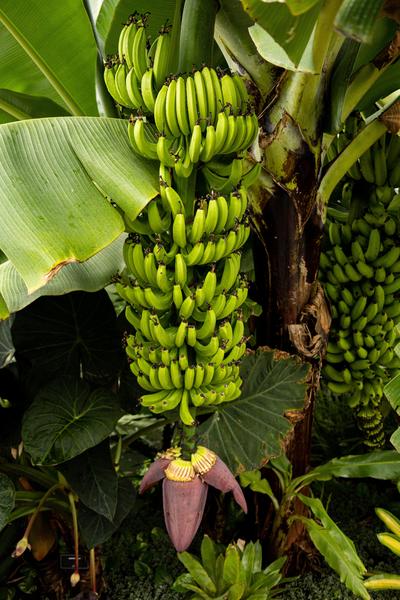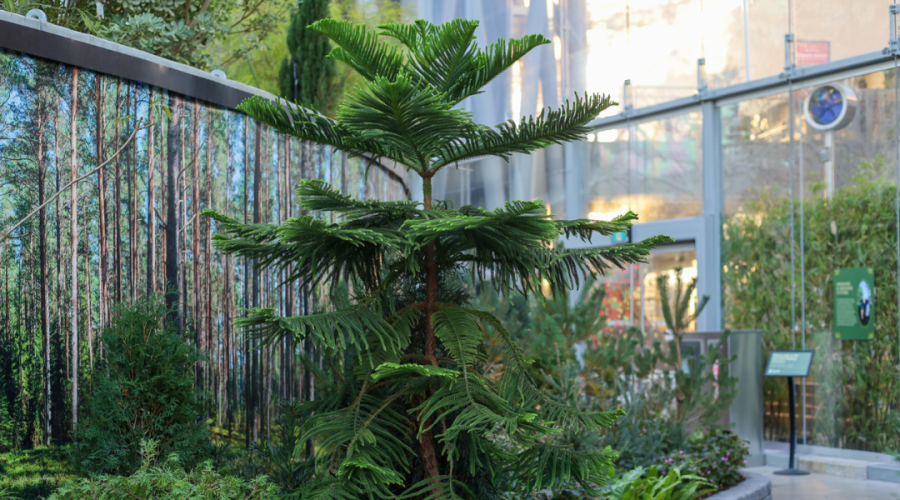We are going bananas over at The Leaf! Our Dwarf Cavendish banana plants are fruiting in the Hartley and Heather Richardson Tropical Biome.
The Cavendish banana, scientifically known as Musa acuminata 'Dwarf Cavendish,' stands as one of over a thousand banana varieties globally. However, it dominates the shelves of supermarkets and constitutes a significant portion of the world's banana export market, with approximately 55 million tonnes produced annually.
Originating from the Indian Subcontinent and Southeast Asia, this species thrives in tropical regions.
The 'Dwarf Cavendish' variety earned its name due to its compact stature, reaching a modest height of eight to 10 feet.
Initially displaying purple or red young leaves, these transition to a vibrant green as they mature, and the plant puts forth a fascinating flower by which the bananas are produced.
The resulting bananas, similar in size to the regular Cavendish variety, measure between six to 10 inches in length. As they ripen, the initially green skin transforms into a familiar yellow hue, encasing a white inner flesh.
Here at The Leaf, we cut off the flower once it begins to shrink to direct the plant's energy into producing the fruits.



The Dwarf Cavendish banana trees exhibit self-pollination, eliminating the necessity for nearby trees to facilitate fruit production. Through the selective cultivation of bananas over time, the fruits have been transformed from wild, seed-filled varieties into the seedless cultivars available today.
Technically bananas are perennials, sending individual shoots from underground rhizomes that mature within one to two years, producing fruit before the cycle concludes with the shoot's natural decline, replaced by new growth from the base. New banana plants that develop from the base of the mother are called pups or suckers.
See if you can spot the bananas on your next visit to The Leaf!





